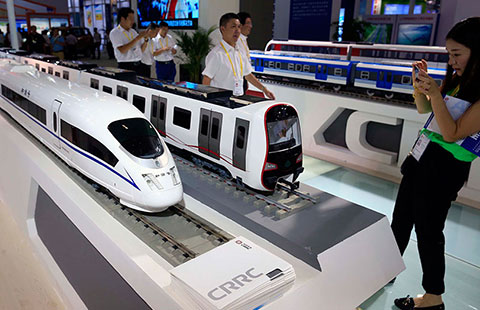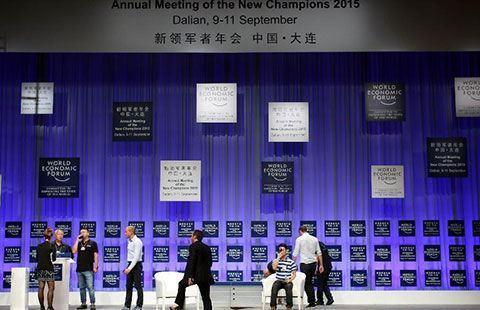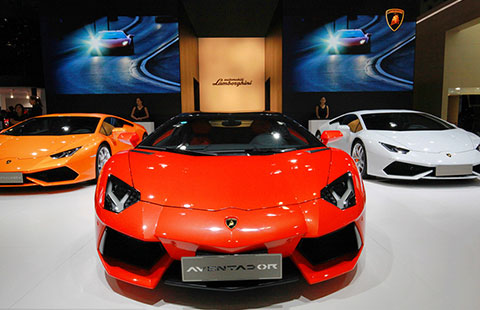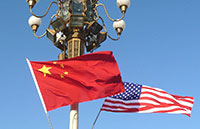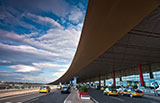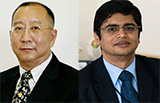Hainan looks to expand its appeal
By ANDREW MOODY/JIANG WANJUAN/LIU XIAOLI (China Daily) Updated: 2015-07-20 07:45International tourists hit a peak of 1 million in 2008 when the overall total number of tourists was 20 million, less than half the current total.
The number of domestic tourists to the island continues to increase at a much faster rate than those from abroad.
Yet a number of policies are in place to attract more international tourists, including visa-free entry for up to 15 days for tour groups of more than five from 26 specified countries.
One of the problems for the Hainan government is that it only has a limited annual tourism advertising budget of $2 million, and this also has been squeezed in recent years.
The local government has been working with the BBC to build a special Hainan webpage, which is updated twice a month.
It also cooperates similarly with TripAdvisor, the world's largest travel site.
In addition, it places billboard ads in the baggage reclaim areas of airports in key target countries such as Russia, Australia, Thailand and South Korea.
At a restaurant in the center of Haikou, Chen Tiejun, deputy director-general of the Hainan Tourism Development Commission, said it is a challenge.
"We have to make better use of the money we have. We are also actually adjusting our strategy by doing more online marketing, which is more cost-effective," he said.
In London, Ben Briggs, marketing manager of Wendy Wu Tours UK, the leading China specialist tour operator, does believe some of this marketing is paying off.
"It (Hainan) is definitely becoming more prominent in the United Kingdom. They (Hainan tourism officials) have been a little bit more proactive in terms of attending trade shows," he said.
"I think there is a big awareness problem about Hainan generally. Not many people know of it. It is definitely important for them to get tour operators on board to help them promote their messages."
Ed Robertson, consulting editor of the Travel Trade Gazette, a leading travel trade magazine, believes Hainan might have chosen the right time to promote itself as an international tourism destination.
Many European tourists are looking for alternative destinations after the terrorist attack on a beach near Sousse in Tunisia on June 26, which killed 38.
"Traditionally, the Mediterranean has always been popular, but it has been susceptible to problems of late. Sadly, the whole of north Africa is not great. The UK foreign office is advising none but essential travel to Tunisia. There have been problems in Egypt, and even Turkey is having a tough time because people see it being near Syria. So new destinations are going to need to open up," he said.
One resort city that could be a magnet for international tourists is Sanya. Some are confident it has the potential to be the Dubai or Miami of the South China Sea.
Sanya's man-made 365,000-square-meter Phoenix Island, designed by the Chinese architect Ma Yansong, certainly resembles The Palm and other reclamation developments in the United Arab Emirates city.
Li Li, deputy general manager of the Sanya Phoenix Island Investment Group, which plans to invest a further 17.6 billion yuan in the area, said she believes Sanya will be firmly on the international map within 10 years.
"I can see it being like Dubai as a place where celebrities such as David Beckham have homes and also a center for international film festivals such as Cannes," she said.
Key to the success of the development is making Sanya an established international cruise destination.
By the end of next year it will have a 225,000 tonnage berth that will be able to take even the world's largest cruise ships. It already had the Queen Mary II visit during this year's Spring Festival.
Cruise liners stop off at Sanya after Hong Kong en route to Vietnam, but there are only likely to be 33 visits this year, compared with 113 in 2013, because of concerns by operators about territorial disputes in the area.
Zhou Chunhua, director of the Sanya Tourism Development Commission, speaking in a 28th-floor executive apartment overlooking the azure blue bay, said the key to popularizing Sanya among foreign tourists are cruise ships.
- 2015 China International Fair for Investment and Trade kicks off in Xiamen
- China's commodity imports robust in Jan-Aug period
- China stocks rebound 2.92%
- 2015 China box office already past 2014 total
- China foreign trade decline widens in August
- Interview: JP Morgan's senior executive bullish on China
- Innovation, development the focus for NZ mayors
- Lives of freelancers
